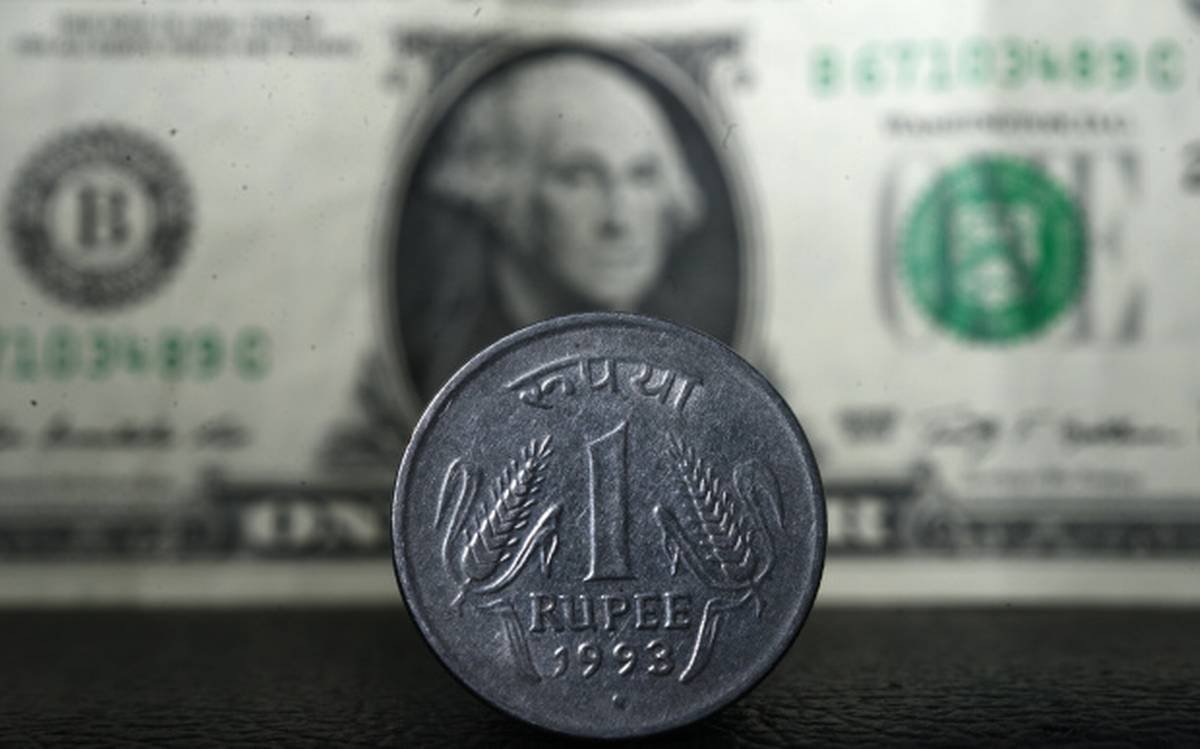Welcome to today’s daily report on the performance of the Indian Rupee (INR) in various currency exchange segments. In this report, we will analyze the opening and closing rates of the INR against four major currencies, namely the Euro (EUR), British Pound (GBP), Japanese Yen (JPY), and United States Dollar (USD).
By examining these rates, we aim to provide valuable insights into the trends and fluctuations of the INR in the global foreign exchange market. Let’s look at each segment to gain a deeper understanding of the rupee’s performance.
Date: June 28, 2023
Place: New Delhi, India
USDINR
In the recent overnight events, the U.S. economic data has shown exceptional strength. A series of economic reports have highlighted an increase in consumer confidence, which hit its highest point since January 2022. Specific attention can be drawn to the month of May, where a notable rise in single-family new home sales was observed. This was coupled with a consolidation of home prices in April. Additionally, regional manufacturing surveys, such as the Richmond Fed’s, demonstrated positive trends. A remarkable surge in durable goods orders was also reported for May.
However, despite these positive signals, the growth of US bond yields and the US Dollar Index has been unexpectedly subdued. Market participants are now anticipating a 25-basis-point increase from the Federal Reserve in the upcoming July meeting. A possible explanation for the US Dollar Index’s lack of significant gains could be the underperformance of short-term US yields, especially when compared to their Eurozone and UK counterparts.
Currently, the currency markets lack a dominant theme, leading to subdued volatility, which has consequently affected USDINR. Over the recent eight trading sessions, USDINR has demonstrated exceptional stability on an intra-day basis, with the daily price range being less than 10 paise. Based on historical data, such a significant reduction in intra-day volatility is usually succeeded by an eventual expansion. Hence, traders employing short-straddle and short-strangle strategies should proceed with caution.
It is recommended to await an expansion in realized volatility before recommencing short gamma and short vega options strategies. Market players should pay close attention to price movements around the support and resistance levels of the range, presently located at 81.86 and 82.17 respectively. A breach of these levels, paired with substantial volume, might set the stage for prices to challenge either the 81.61/66 support zone or the 82.40/45 resistance zone.
GBPINR
Despite a more robust economic backdrop in the U.S. and India as compared to the UK, the rising short-term yields in the UK continue to bolster GBPUSD and GBPINR. This can be inferred from the steady increase in speculative long positioning, as shown in the CFTC report. While GBPUSD and GBPINR have been rangebound since reaching their peak on June 16th, this phase can be considered a consolidation period prior to the resumption of an upward trend.
The key event today will be the address by the governor of the Bank of England. Our bullish perspective on GBPUSD and GBPINR remains unchanged, provided these currency pairs continue to maintain levels above 1.2680 and the 103.80/104.00 zone, respectively.
EURINR
During the European Central Bank’s (ECB) annual forum held in Sintra, Portugal, a crucial dialogue took place amongst seven rate-setters. Despite signs of economic fragility in the Eurozone, there was a unanimous consensus that borrowing costs will see an upward revision in the upcoming July and September meetings. The ECB’s President, Christine Lagarde, acknowledged the persisting inflation and stressed the importance of elevating rates to counteract this issue. However, she also suggested that it might be too early to initiate discussions on-peak rates.
This development led traders to promptly modify their positions, increasing their stakes in the ECB and raising its deposit rate to 4.0% by the end of the year, a hike from the current 3.50%. In the aftermath of these adjustments, both EURUSD and EURINR displayed an upward trend, with prospects for additional gains in the near term, underpinned by the climbing Eurozone bond yields. Consequently, the bias in EURINR remains inclined towards the upside.
The current positive sentiment continues to influence market predictions, cultivating a hopeful perspective for the near future. The anticipation of sequential rate increases, along with strengthening Eurozone bond yields, offers further momentum to the ascending movement of both EURUSD and EURINR. This implies a high likelihood of a persistent rise in the upcoming weeks. It is of utmost importance for investors to carefully observe these developments, recognizing the continuous upward bias in EURINR, which poses advantageous prospects for potential gains.
JPYINR
The JPYINR opened at 57.09. Throughout the day, the currency pair experienced shifts driven by market fluctuations, regional economic developments, as well as global financial cues. Investors and traders closely monitored the changes, strategizing their positions accordingly.
As the trading day came to an end, the market closed at 57.17. This indicates a slight increase from the opening position. The close value represents the consensus of the market participants about the value of JPYINR after considering all information available up to the closing time on 27th June.
When evaluating the currency pair, it’s important to remember that numerous factors can influence its value. This includes macroeconomic data, central bank policies, political developments, and overall market sentiment.
Trading in currency pairs, such as JPYINR, requires a careful analysis of these factors, a solid understanding of the financial markets, and a well-thought-out investment strategy. Keep monitoring the performance of JPYINR, along with other economic indicators, to make informed trading decisions.
Key Highlights for Today
The Indian markets are anticipated to open slightly higher, aligning with the mixed Asian markets today and the increasing trend in the US markets on Tuesday.
Tuesday saw US stocks trending higher, propelled by mega tech stocks. This trend was supported by data suggesting the resilience of the economy, even amidst heightened interest rates, as investors approach the end of the second quarter and the first half of the year. Stocks experienced an uplift Tuesday, following a series of mostly positive economic data, including figures on durable-goods orders, home sales, and consumer confidence. This positive economic data alleviated investor fears about a potential recession incited by the Federal Reserve’s aggressive interest rate hikes. Tech-related mega-cap companies, especially those involved in the budding AI craze, bolstered the Nasdaq by 1.8%, marking its largest one-day percentage leap in a month.
Further boosting the risk appetite on Tuesday were comments made by China’s premier Li Qiang. He indicated that the world’s second-largest economy remains on track to achieve its annual growth target of around 5% and that Beijing would implement policies to boost domestic demand and open markets.
Orders for manufactured US goods saw a 1.7% jump in May, surpassing the 0.9% forecast, marking the third consecutive month of increase. This was mainly due to the robust demand for passenger planes and new cars.
US new home sales witnessed a 12.2% increase, achieving an annual rate of 763,000 in May against the 675,000 forecast, up from a revised 680,000 in the previous month. In June, the Conference Board’s consumer-confidence index escalated 7.2 points to a 17-month high of 109.7, rebounding from a six-month low and exceeding the 104 forecast.
On the other hand, China’s industrial profit in May decreased by 12.6% from a year earlier, a slight improvement from the 18.2% drop noted in April, according to the National Bureau of Statistics. In the January-May period, China’s industrial profit witnessed an 18.8% decline.
In response to a dipping currency, China took its first forceful action in almost eight months, with the country’s state banks working to establish a lower limit under the yuan, even as officials pledged more stimulus for the slowing economy.
On Wednesday, Asian stocks showed mixed results, following a rally on Wall Street fuelled by the strength in US consumer confidence and home sales.
On 27th June, the Nifty rebounded sharply, closing with a 0.68% rise at 18817. The Indian markets are currently experiencing a broad-based rally. The percentage of Stocks above 200 DMA reached above 75% in the current rally, higher than the 68% reading in December 2022, when the all-time high of 18887 was registered. This suggests a strong breadth in the current rally which started from April 2023. It is projected that the Nifty could now face resistance at 18888, and subsequently, at 19000.
Disclaimer
The information provided by CurrencyVeda is purely for educational purposes. It should not be construed as investment advice or a solicitation to buy or sell any financial instrument. Trading in financial markets involves risk, and it is recommended that you seek professional advice before making investment decisions.


